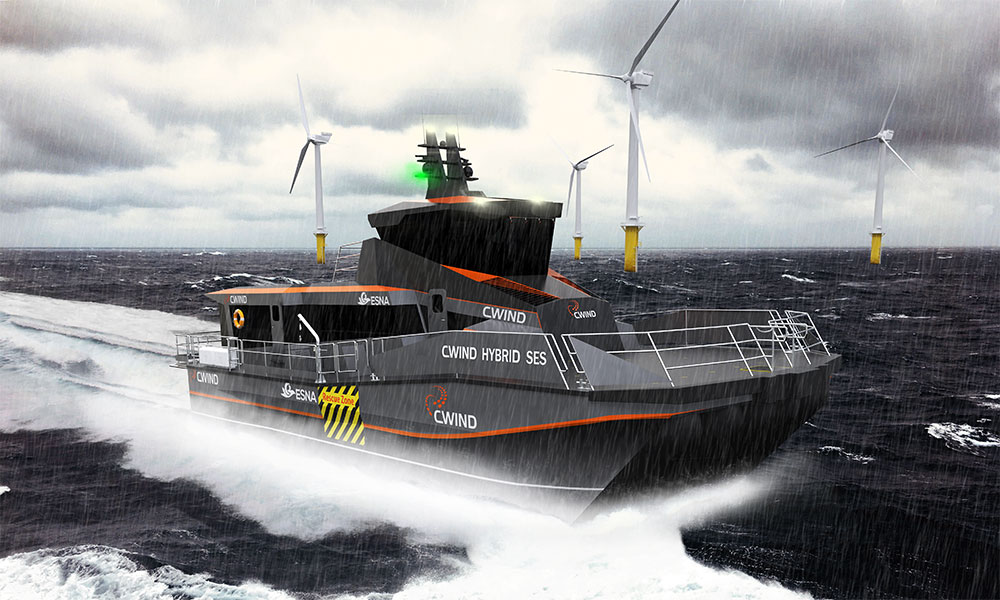Contact Us
The CWind Hybrid SES is the world's first hybrid propulsion surface effect ship, offering a step change in operational capability, performance and efficiency in wind farm O&M and construction activities.
The CWind Hybrid SES is the world’s first hybrid propulsion surface effect ship, offering a step change in operational capability, performance and efficiency in wind farm O&M and construction activities.
CWind is committed to investing in innovation and new technology, in partnership with ESNA, to create a design for the future of CTVs.
The hybrid surface effect ship (SES) CTV has many advantages over traditional CTVs including:
> Reduced emissions
> Significant fuel savings
> Boosted battery performance
> Sustainable green technology for the future

CWind Delivering the World’s First Hybrid SES
There is an industry wide push to develop and adopt new technologies to reduce CO2 emissions, fuel consumption and costs of offshore vessels. Not only does this benefit economically, but also reflects the responsibility the offshore sector has in addressing climate change, one of the challenges that the UK Government has identified. For CWind, striving to achieve these key industrial and client drivers led to exploring the possibility of creating a new CTV that not only delivers lower CO2 levels, but will perform at higher sea state, at increased operational limits and offering better transit comfort as wind farms sites are beginning to be located further off shore. This CTV shall support our clients in achieving their green objectives, when working on their projects.
CWind partnered with ESNA, a naval engineering company that specialises in surface effect vessel development, to deliver a faster and fuel efficient CTV that can operate in higher sea states by using air cushion motion damping, otherwise known as a surface effect ship (SES).
Developing a Greener, more Fuel Efficient CTV
Achieving faster long distance travel, while reducing CO2 was key in the vessel’s development, the team explored both hybrid diesel/electric and hybrid diesel/hydrogen options. Electric propulsion does work best over shorter distances but, despite technological innovation that have reduced battery weight, it was not enough to counteract the weight of a larger battery needed to travel greater distances. Therefore diesel is needed to supplement the electric pack. At this point hydrogen technology is not sufficiently developed to offer a suitable solution, however the vessel may be retrofitted with fuel cells when the technology matures. The hybrid diesel/hydrogen was unable to deliver the CO2 saving to make it viable at this time, whereas the hybrid diesel/electric option can deliver the speed and distance while achieving a lower CO2 value.
The SES vessel was then modelled and tested at the Stadt Towing Tank facility in Norway, where they were able to verify the design as effective in increased sea states. The surface effect vessel design delivered improved sea-keeping and motion keeping performance, demonstrating a 2.0m Hs transfer height, as well as encompassing the characteristic of the SES hull form, to deliver improved fuel efficiency and associated reduction in CO2.
Improving Comfort and Safety
Alongside the improved heave compensation that improves comfort for all passengers and crew, the vessel is also fully air-conditioned, with personalised seating for passengers and crew.
In addition the bridge is ergonomically designed, and has enhanced visibility, for safer transfer of technicians and crew.
CWind has now commissioned the boat builder AMC, to deliver the new Hydrid SES by April 2020. Once in service it will offer a step change in operational capability, performance and efficiency in support of offshore wind farm O&M and construction activities.
TRL (Technology readiness level) Scale
![]()